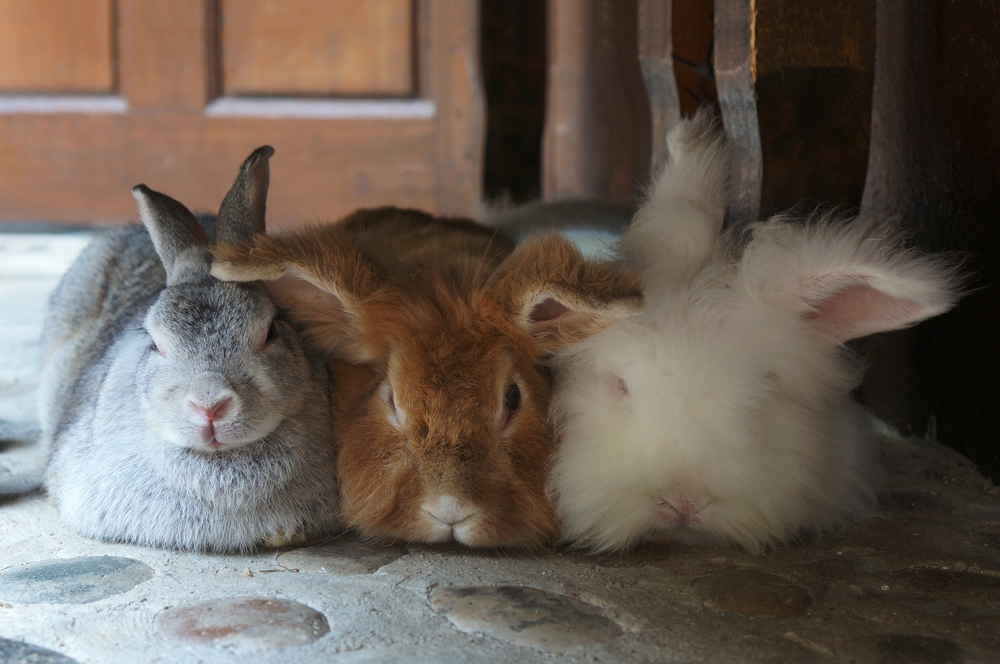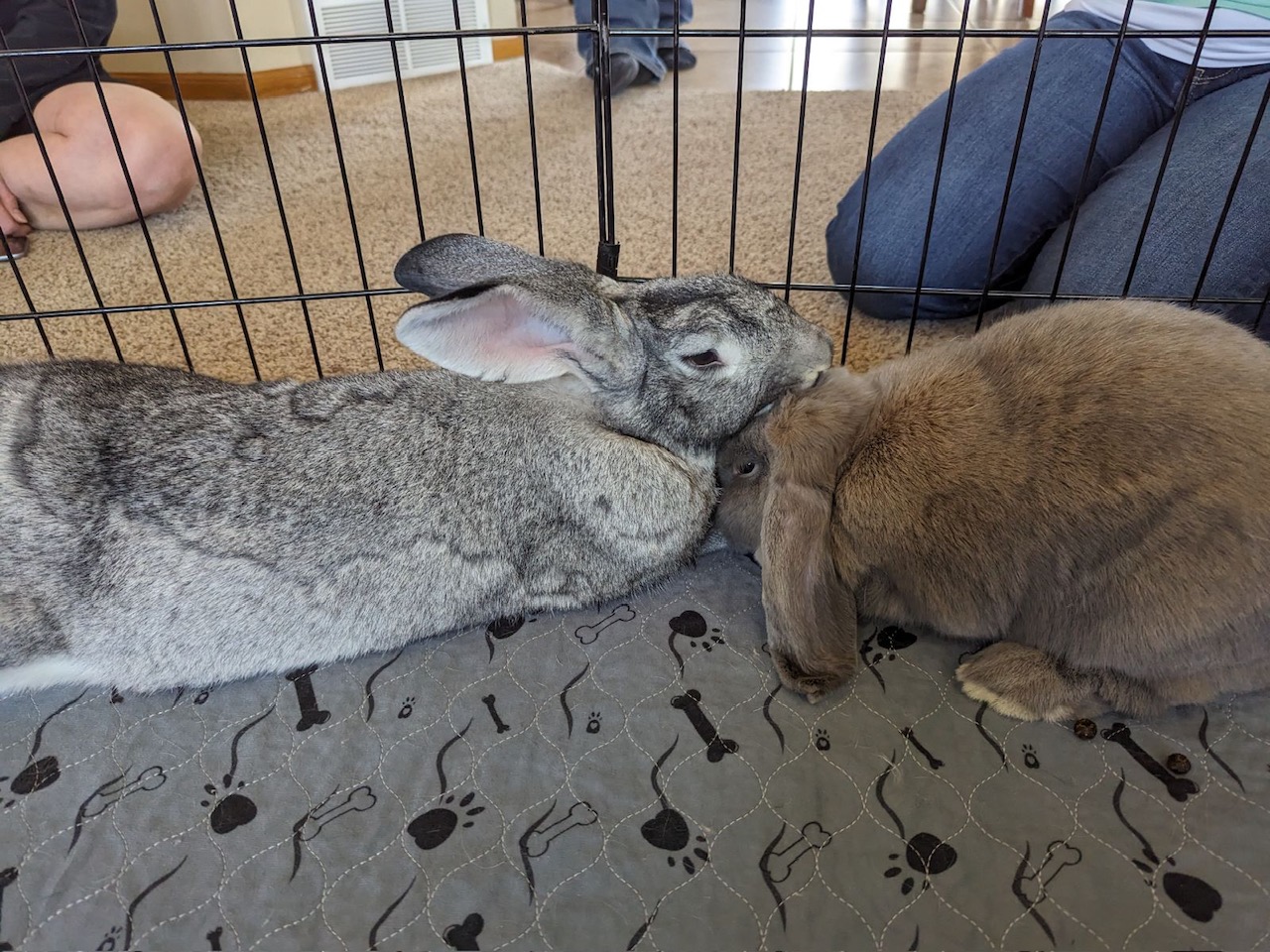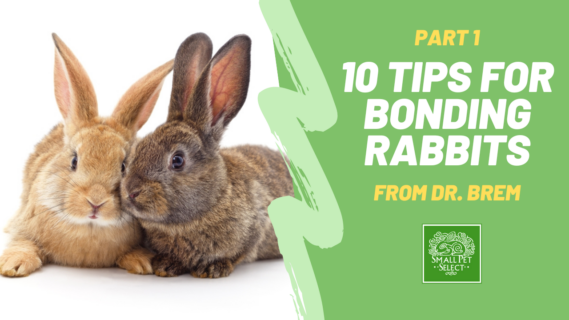Rabbits are very social animals. Even if you give your bun lots of attention, it will most likely benefit from a partner. However, kind of like with people, you usually can’t just throw them together and expect them to automatically get along. Bonding is necessary. How to bond rabbits? Here are some tips and tricks to help the bonding process go as smoothly as possible.
Part 1: How To Bond Rabbits
Here are the first 5 tips on how to bond rabbits with the next five in our next blog!
Tip 1: Know That Love At First Sight Will Likely Not Occur
To help start off on the right foot (so to speak), it’s important to be aware of a few basics. First, the rabbits should be neutered/spayed. The decrease in hormones in altered rabbits helps decrease territorial attitudes.
Second, it’s usually easiest to bond a female and a male together. If bonding a trio, usually one female with two males works best. Age, size, and breed of rabbits usually don’t matter – it’s the rabbits’ personalities that do. The best bond is between a rabbit who is more dominant and one who is more submissive or laid back.

During an initial meeting, rabbits may approach each other, sniff, and run away. They may ignore, chase, or mount each other.
These behaviors usually decrease over time. Occasionally the rabbits fall in love at first sight, grooming each other right away. Also occasionally, both rabbits fight. This is the scenario in which the bond may not work. Most likely, you’ll have a combination of behaviors.
Rabbit dates must be in a neutral area. Rabbits are extremely territorial of their spaces, so the bonding area should be in a space that the current rabbit does not go, such as an unused room, a bathroom, or even a friend’s home.
This way, the rabbits can get to know each other without feeling like they need to defend their own space. When I do rabbit intros, I also don’t allow litter boxes or toys in the space at first because I don’t want the possibility of territorial feelings over those objects.
Tip 2: Let Your Rabbit Choose Its Own Friend
One of the most frequent things I do as a shelter volunteer is facilitate rabbit introductions. The great thing about our setup is that a potential adopter can let his or her rabbit meet several fosters and see whom it gets along with best!

The rabbits are placed in, of course, a neutral area that does not smell like either of them, and they get about 30 minutes with each potential friend. I check out how they react to being next to each other, being farther away, when one is being kept still while the other runs around, and when one is sniffing the other.
The whole time, I am ready to distract and separate if fighting begins.
Letting your rabbit pick its own friend/friends can take a little longer at first and can sometimes take multiple visits, but when you do adopt you will probably have a much easier time with the bonding process.
Tip 3. Let The Rabbits See And Sniff Each Other Even When They’re Not Together
At home, house the rabbits close together but separately. One option is two exercise pens next to each other with a gap in between.
This way, the rabbits can get used to each other but aren’t so close that they could reach each other and bite. If you decide to keep one rabbit in one room and the other in an adjoining room, there should still be two barriers so that they can’t injure each other.
Keep in mind that for play time they will need to be let out separately until they are fully bonded.
Your rabbits should start to learn that they will be sharing space from now on as soon as possible. One of the best ways to accomplish this is to either keep the rabbits in their own enclosures but swap litter boxes, toys, and bowls each day or to swap the rabbits themselves so that they are living in the other one’s space every other day.
Tip 4. During Bonding Sessions, Remain Calm, Gentle, And Relaxed
During the first week or so, having the bonding sessions in the afternoon can be helpful. In the afternoon, rabbits are not naturally as active and therefore may feel calmer and even possibly nap with each other.
If you're able to give each rabbit separate play time beforehand, that may tire them out even more and release any pent-up energy prior to bonding time.

Maverick (gray) grooms Ellie during an introductory bonding session while Maverick’s owner and a shelter volunteer are ready to intervene. Photographer: Laurie Simmons. Used with permission.
Try to have each session when you can be calm, when you aren’t rushed to do something else, and when you can pay absolute attention to the rabbits. A second person may be helpful, too, especially if you’re bonding a single rabbit with a pair.
Don’t ever leave the rabbits unsupervised until they’re fully bonded, even for a few seconds, because a serious injury can occur fast. To separate them if a fight does occur, have a dustpan or something similar ready to stick between them. Even if a fight happens, remain calm and gentle. Never yell at the rabbits; use a soft voice, even while separating them. You don’t want more negativity than already was experienced.
5. Start Out With Short Sessions In A Small Area
Beginning with a small space has several benefits: rabbits are forced to be closer together instead of nervously staying away from each other, there’s less chance of becoming territorial, and it’s easier to break up any potential scuffles.
In your neutral area, use part of an exercise pen or block off part of the space that you will eventually make larger. Some people like to use a bathtub as the initial space. Once the rabbits seem to be getting along, increase the space. Then increase it again.
Know, however, that rabbits may have little setbacks each time you change anything. Once you’re in a space large enough for you to sit in with them, do that. To make the space positive and fun before you add in toys and boxes, you can give them hay and greens.
Make sure to have at least one bonding session a day, even if it is very short. More are better. I like to start out with about 20 minutes a session at first and see how it goes. If they seem to be doing well and not getting bored or frustrated, I go about 10 or 20 minutes more.
As they get to know each other better, you can increase the time each day – and add things to their space.
Once they are in the largest bonding area and spending enjoyable time together, you can remove yourself from the immediate area – but not the room. After a few times of that, you can leave the room but still be within hearing distance. Then, once they can be together for several hours, I recommend a slumber party! (See tip number 10!)
Copyright 2024 Amy “Brem” Bremers, DVM





